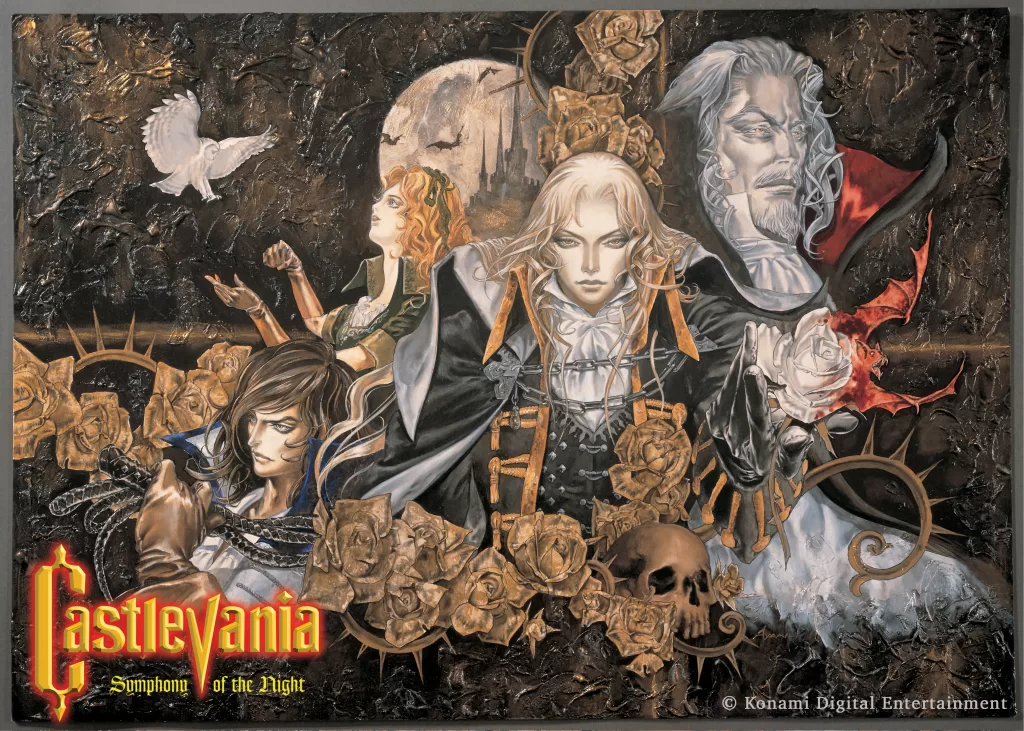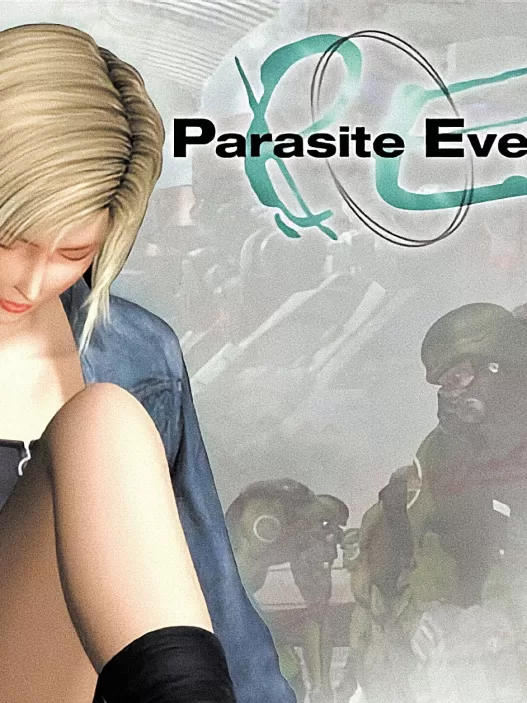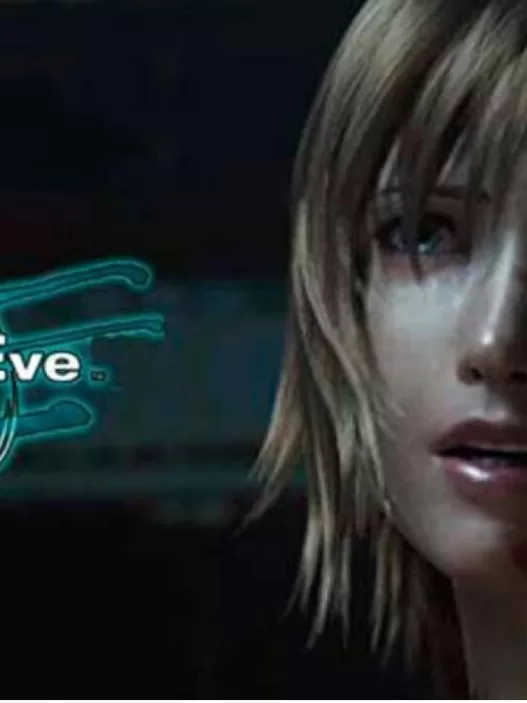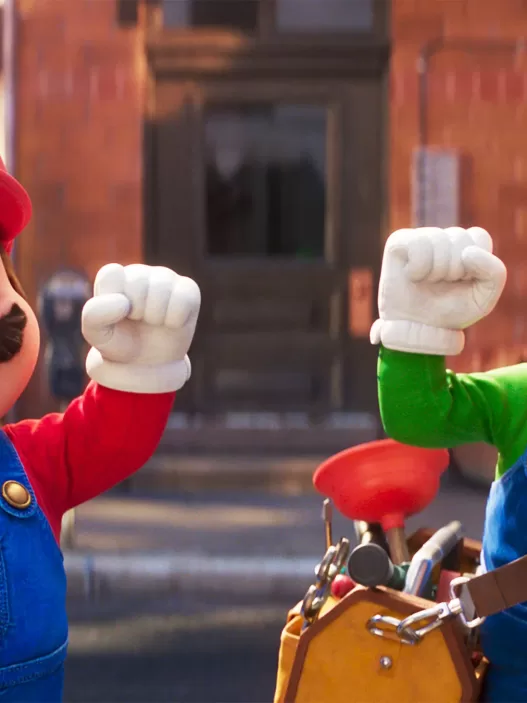
If you’ve ever found yourself battling hordes of skeletons, dodging flying Medusa heads, and getting absolutely wrecked by Dracula (again), then congrats—you’re familiar with Castlevania, one of the most iconic and enduring franchises in gaming history. For nearly four decades, Castlevania has kept players hooked with its brutal difficulty, hauntingly beautiful music, and enough Gothic horror vibes to make Edgar Allan Poe jealous.
But how did this legendary series start? Why has it endured for so long? And where the heck is it now? Grab your whip, a turkey hidden in a wall, and let’s dive deep into the epic, undead-filled history of Castlevania.
The Humble Origins: 8-Bit Horror and Pixelated Peril (1986-1989)
Once upon a time, in the dark and pixelated era of the 1980s, Konami unleashed a little game called Akumajō Dracula (which translates to “Demon Castle Dracula”) onto the Famicom Disk System in Japan. When it hit North America on the NES in 1987, it was rebranded as Castlevania, and the rest, as they say, is history.
Enter Simon Belmont, the first of many Belmonts tasked with taking down Dracula. Armed with a legendary whip known as the Vampire Killer, Simon set out on a side-scrolling, monster-bashing journey through Dracula’s castle, encountering everything from skeletons to flying eyeballs to… stairs. Seriously, the stairs in this game were an enemy in their own right.
Why Castlevania Became an Instant Classic:
- Atmosphere for days: Inspired by classic horror films like Dracula and Frankenstein, the game’s eerie environments and creepy enemies made it stand out.
- Music that slaps: Tracks like “Vampire Killer” and “Wicked Child” became instant classics.
- Brutal difficulty: Beating Castlevania wasn’t just an achievement—it was a badge of honor.
Notable sequels in the 8-bit era:
- Castlevania II: Simon’s Quest (1987) – This one threw in some RPG elements and day/night cycles, but it was cryptic as hell. “Kneel at a random wall with a crystal to progress” isn’t exactly intuitive.
- Castlevania III: Dracula’s Curse (1989) – A glorious return to the classic formula, with branching paths and multiple playable characters (Alucard, anyone?).
The 16-Bit Era: Super Castlevania IV and the Rise of the Whip Lords (1991-1997)
With the dawn of the SNES, Castlevania leveled up in a big way with Super Castlevania IV (1991)—arguably one of the greatest action-platformers of all time. This wasn’t just a rehash; it was a full-blown reimagining of the original, with eight-directional whip attacks, rotating room effects, and a soundtrack that could make even the most hardcore metalhead shed a tear.
Meanwhile, Castlevania was also making waves on the SEGA Genesis with Castlevania: Bloodlines (1994), which introduced new characters and brought the franchise to a new audience of 16-bit aficionados.
The PlayStation Era: The Symphony That Changed Everything (1997)
Then came 1997, and with it, a little game called Castlevania: Symphony of the Night.
If you weren’t around when this game dropped, let me paint you a picture: Imagine stepping into Dracula’s castle, but instead of linear levels, you get a sprawling, interconnected masterpiece filled with secrets, RPG elements, and gameplay so smooth it felt like butter. And oh, the music—every track was a masterpiece.
Symphony of the Night introduced:
- Alucard, Dracula’s brooding, badass son with flowing hair and a thirst for justice.
- Exploration-based gameplay, later dubbed Metroidvania, blending action, platforming, and RPG elements into one beautiful cocktail.
- Epic voice acting (“What is a man? A miserable little pile of secrets!”).
This game redefined the franchise and gave birth to an entirely new genre, inspiring countless imitators over the years.
The Handheld Domination: GBA and DS Gold (2001-2008)
With the Game Boy Advance and Nintendo DS, Castlevania found a new home and thrived. The 2D, Metroidvania-style gameplay fit perfectly on handheld devices, and Konami delivered some of the series’ best entries, including:
- Castlevania: Aria of Sorrow (2003) – Introduced the Tactical Soul system, letting players absorb enemy abilities.
- Castlevania: Dawn of Sorrow (2005) – The first DS entry, bringing touchscreen features and incredible sprite work.
- Castlevania: Order of Ecclesia (2008) – A fresh take with a unique magic glyph system and a tough-as-nails challenge.
The 3D Struggles and Lords of Shadow Reboot (2003-2014)
Let’s be real—Castlevania’s attempts at 3D haven’t always been… great. Games like Castlevania 64 (1999) had some cool ideas but suffered from awkward controls and a frustrating camera.
Fast forward to 2010, and Konami decided to hit the reboot button with Castlevania: Lords of Shadow.
What changed?
- It went full God of War with hack-and-slash combat.
- Gabriel Belmont became Dracula (plot twist).
- Mixed reviews, but it brought fresh eyes to the franchise.
Netflix to the Rescue: The Modern Era (2017-Present)
Just when things seemed quiet, Netflix swooped in with a Castlevania animated series, and let me tell you—it slaps. With stellar animation, a gripping story, and top-tier voice acting, the series reintroduced Belmonts to a whole new generation.
Meanwhile, indie developers took inspiration from the series with games like Bloodstained: Ritual of the Night, proving that the Metroidvania genre Castlevania helped pioneer is still alive and well.
The Future of Castlevania: What’s Next?
With Konami sitting on one of the most iconic franchises of all time, the big question is: Will we ever get a new Castlevania game? Fans are hopeful, and with the success of the Netflix series, demand has never been higher.
One thing’s for sure: Whether you’re an old-school vampire hunter or a newcomer ready to explore Dracula’s castle for the first time, Castlevania’s legacy will never die.
What’s your favorite Castlevania game? Sound off in the comments and let’s whip up some nostalgia!
















